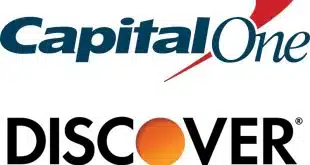In what appears to be a continuing case of revenue recovery in one area when another one gets tight, financial institutions are continuing to raise ATM fees, some to record levels, according to Bankrate Inc.’s latest annual survey of bank fees.
The North Palm Beach, Fla.-based provider of financial information for consumers says the average ATM surcharge rose for the eighth straight year in 2012 and is now $2.50, up 4% from $2.40 in 2011. In 2008, the average surcharge was $1.97. Banks and credit unions assess surcharges to non-customers who use their ATMs. In fact, the 2012 survey was the first one since the survey started in 1998 in which all banks and credit unions queried reported that they surcharge non-customers.
Claes Bell, a senior banking analyst at Bankrate, says the increase in surcharges is partly due to inflation, but that’s not the whole story. “I would also say that raising ATM surcharges is probably a little bit more painless that other types of fees–it only alienates non-account holders,” Bell tells Digital Transactions News.
Financial institutions, however, are willing to have their customers share some of the fee pain by charging them so-called foreign fees when they use another company’s ATM. Those fees aren’t as high as surcharges, but they did take a big jump this year, up 11% to an average of $1.57 from $1.41 in both 2011 and 2010.
On a transaction that generates both a foreign fee and a surcharge, the average total is now a record $4.07, up nearly 7% from 2011.
Bankrate obtained its data late this summer from 10 banks and thrifts in each of 25 large U.S. metropolitan areas. In total, the company reviewed data about 241 interest-bearing and 236 non-interest-bearing accounts.
Bell attributes the increases in ATM and other bank fees to efforts by financial institutions to recover revenue lost both to the Durbin Amendment’s debit card regulations, which took effect nearly a year ago, and to changes in Regulation E, which governs electronic funds transfers. At the same time, banks continue to reward consumers with fee waivers or other incentives for signing up for direct deposit or other bank products, all with the intention of making it harder for customers to take their business to another bank.
“We’re seeing banks test the waters and see how far they can push these fees before customers switch,” says Bell.
Monthly or annual debit card fees, however, remain a third rail. Fewer than 1% of checking accounts charge an annual debit card fee, and fewer than 4% of checking accounts include a debit card that charges a fee at the point of sale for a PIN transaction. Several banks, most notably Bank of America Corp., planned to test, tested, or briefly imposed debit card fees in the post-Durbin environment, but most backed off after a huge public outcry.
While some fees just won’t stick, Bell expects financial institutions will continue to experiment with fees on ATMs, debit cards, and other features of demand-deposit accounts that they can get away with. “They’re going to keep increasing fees … without alienating customers,” he says.
Other findings from the Bankrate survey:
–Non-sufficient-funds fees (NSFs, also known as overdraft fees), increased 1.4%, in line with inflation, to a new high of $31.26 on average. The most common NSF fee is $35.
–Only 39% of non-interest checking accounts surveyed are offered to all customers free of charge, down from 45% in 2011 and a peak of 76% in 2009. This year, in addition to the 39% of free, standalone non-interest accounts, another 56% will waive fees if the customer meets certain conditions, the most common one being direct deposit.
–The average monthly fee on a non-interest-bearing checking account is a record $5.48, up 25% from last year. The average balance needed to avoid the fee is $723, up 23% from the record set in 2011.
–The average monthly service fee on interest-bearing checking accounts is $14.75, up 4% from 2011. Account holders need an average balance of $6,117, up 9% from 2011’s record level, to avoid the fee.



